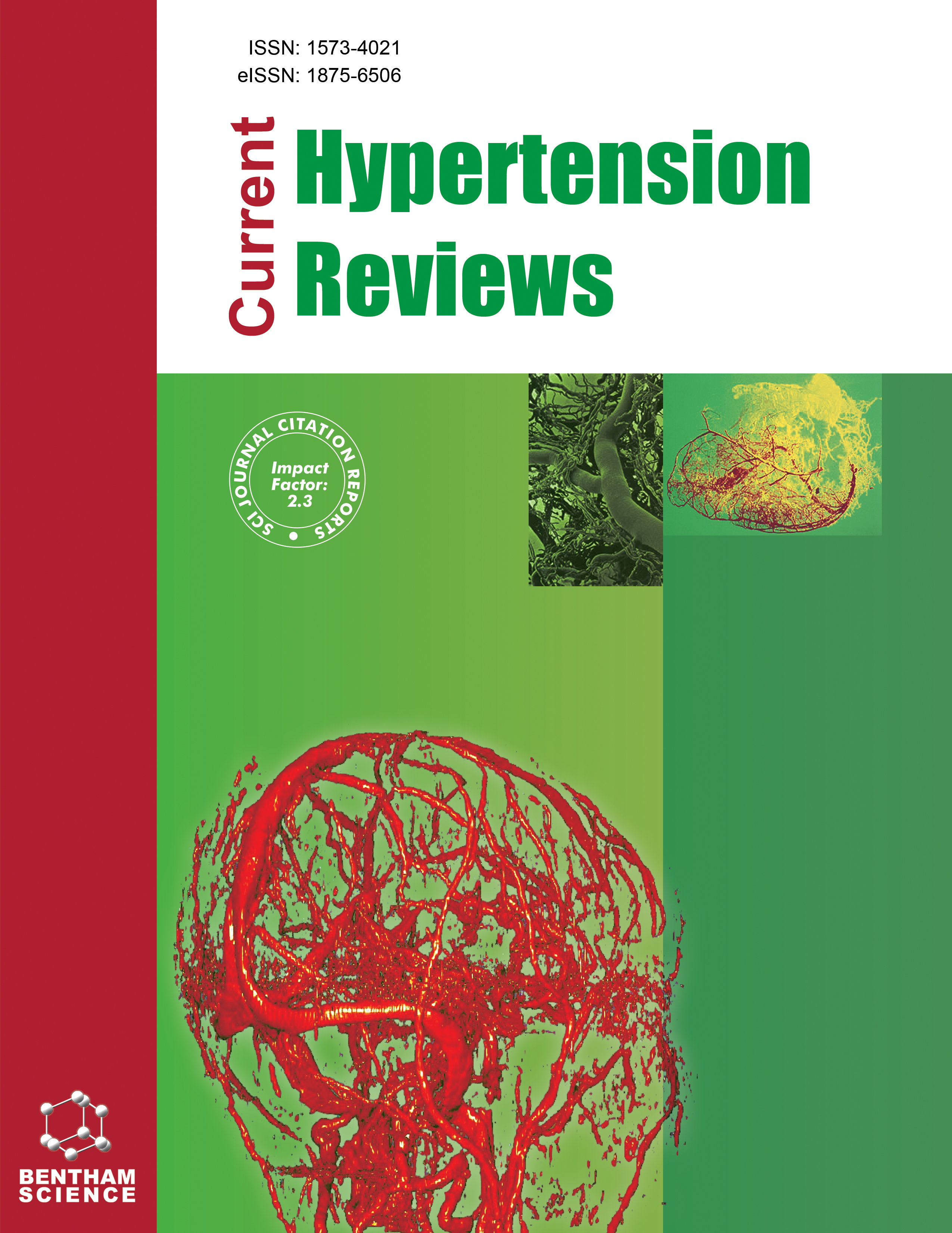-
oa Editorial [Hot topic: Hypertension and Diabetes (Guest Editor: Kazuko Masuo)]
- Source: Current Hypertension Reviews, Volume 7, Issue 3, Nov 2011, p. 125 - 125
-
- 01 Nov 2011
Abstract
The increase in the prevalence of obesity, which has been considered an epidemic by the World Health Organisation, is a serious, worldwide, health problem. Importantly, hypertension and diabetes, especially type 2 diabetes, are frequently associated with obesity, and together, constitute a significant burden, both in terms of patients' morbidity and health care costs. The driving forces linking hypertension, diabetes and obesity remain to be clarified due in part to the fact that environmental, genetic, life style and behavioural confounders are involved in generating the disease state. Both hypertension and diabetes affect the same major target organs. Importantly, taken in isolation, obesity, hypertension and diabetes are all associated with increased risks in the development of cardiovascular and renal complications; however, with the coexistence of diabetes and hypertension the risk is elevated more substantially. The purpose of this special issue is to present the current findings on “hypertension and cardiovascular-renal complications in diabetes”, especially focusing on the mechanisms linking the three conditions (hypertension, diabetes and cardiovascularrenal complications) with the main emphasis being on disease onset and development, and pharmacological treatment for hypertension in diabetes. Morales-Villegas reviewed cardiovascular risk factors widely including hypertension, diabetes, atherosclerosis and inflammation. Regarding the mechanisms, Sugimoto et al. discussed that insulin resistance plays a key role in metabolic syndrome as well as hypertension in obesity associated with activation of renin-angiotensin-aldosterone system, sympathetic nervous system and salt sensitivity, and unbalanced regulation of adipocytokines is also a major factor on progression of insulin resistance. They also proposed therapeutic approaches to hypertension in obesity or metabolic syndrome targeting on the insulin resistance. Masuo et al. reviewed the “epinephrine hypothesis”, which might explain how the adreno-medullary hormonal system could contribute to the development of hypertension by augmenting sympatho-neuronal norepinephrine release. Recently several investigations have shown that childhood obesity and birth-weight may relate to future cardiovascular risks, hypertension, metabolic syndrome, and obesity. Kong et al. investigated the relationships between birth-weight and components of metabolic syndrome in young school children with a longitudinal study. They found lower birth-weight had higher risk of clustering of metabolic syndrome components even in children aged 7-9 years. They concluded that monitoring growth throughout childhood is necessary to reduce the risk of metabolic syndrome. Stanley et al. discussed that the growing incidence of obesity and higher rates of metabolic syndrome in mental health patients placed this group of patients at much higher risk of type 2 diabetes and cardiovascular diseases. They suggested that those patients need not only psychotropic medications but also lifestyle modification. Lifestyle modification is the first line treatment for obesity and type 2 diabetes. Buranakijaroen et al. showed simple lifestyle modification could significant improvements on insulin resistance over a 4- month period, but this rebounded at 6 months. In this study, a simple instruction on mild losing weight and exercises provided by a trained nurse every 2 months had been found to affect on the insulin sensitivity in hypertensive patients with metabolic syndrome However, the effect was transient. Siegel et al. They discussed the benefit of treatment for hypertension in diabetes, particularly focused on the Action to Control Cardiovascular Risks in Diabetes Study (ACCORD). The combination of hypertension with obesity and diabetes, for a variety of reasons, renders the hypertension difficult to control, with patients frequently requiring two or more types of medications to achieve blood pressure goals. Masuo reviewed a wide range of pharmacological treatments for hypertension in obesity. A better understanding of the relationships and interactions between the physiological mechanisms of hypertension and diabetes may help in the development of appropriate clinical treatment of hypertension accompanied with diabetes. This special issue covered a wide range of “Hypertension and Diabetes” issues including, physiology and treatments, but all articles are very unique. The editor would like to thank the authors for submissions for our special issue and the reviewers for their help. I enjoyed editing the variety of articles. I hope that this special issue is useful for your clinical medicine, research and reducing a population of obesity worldwide.


